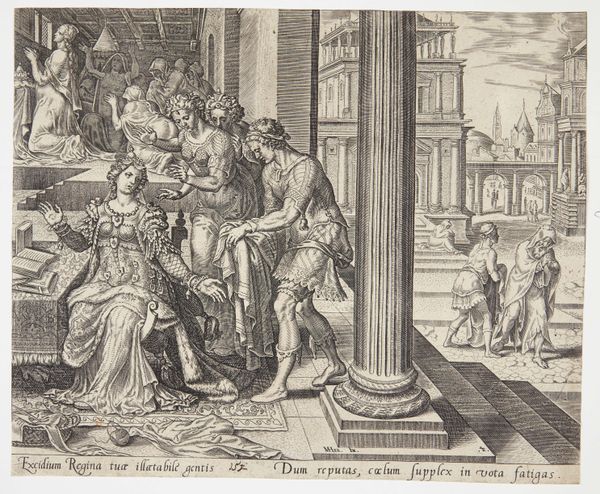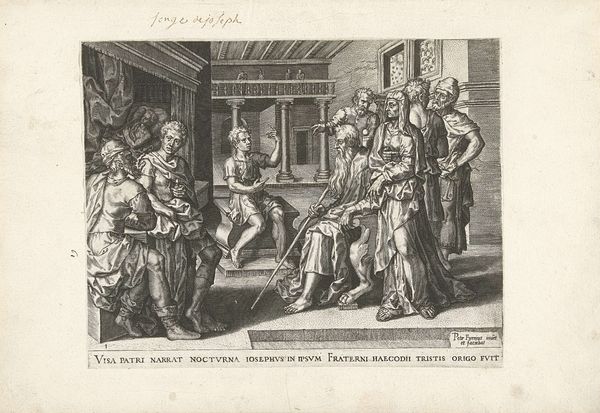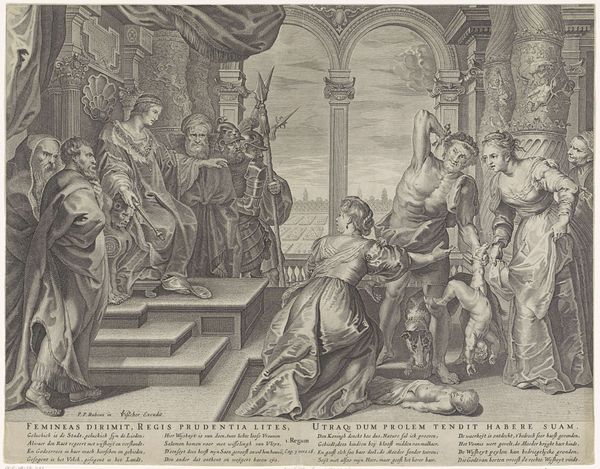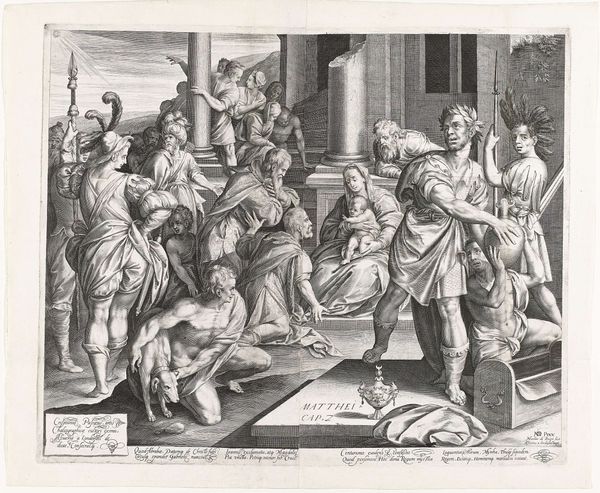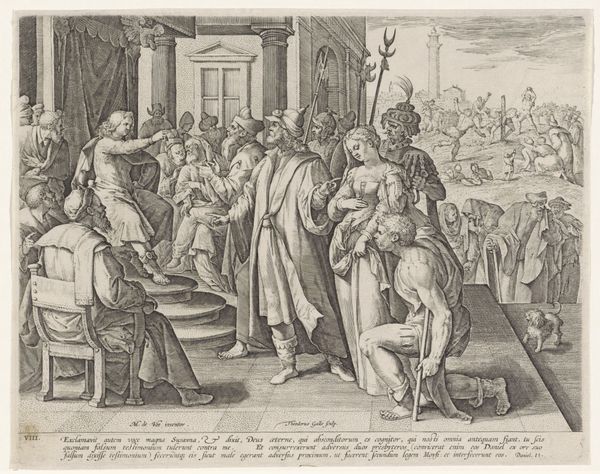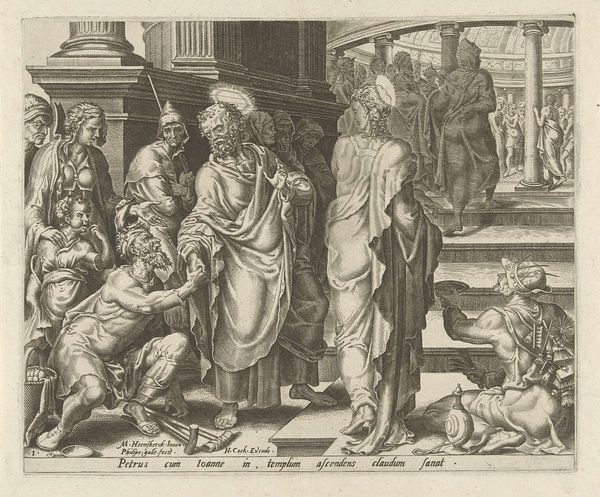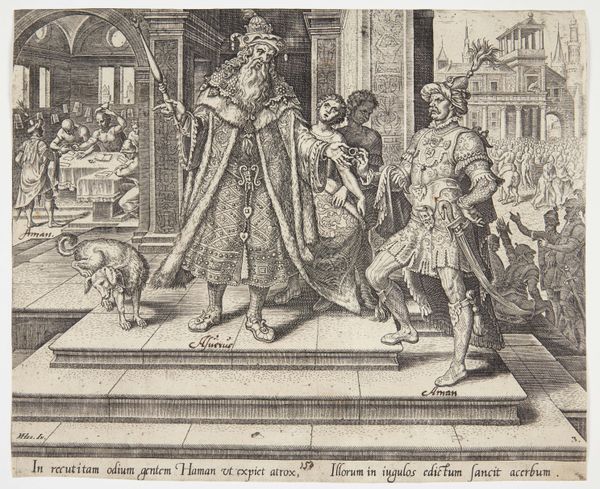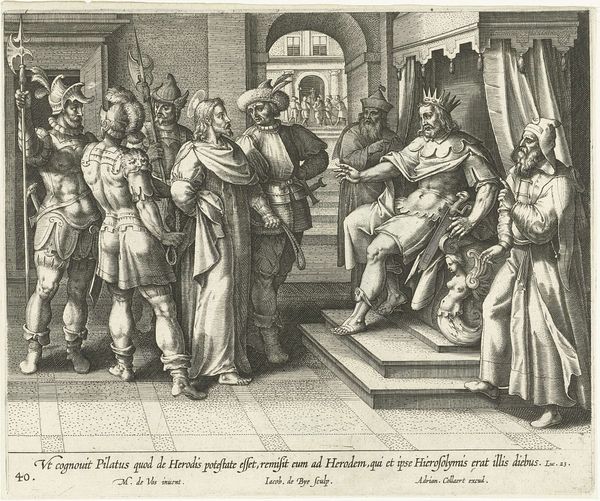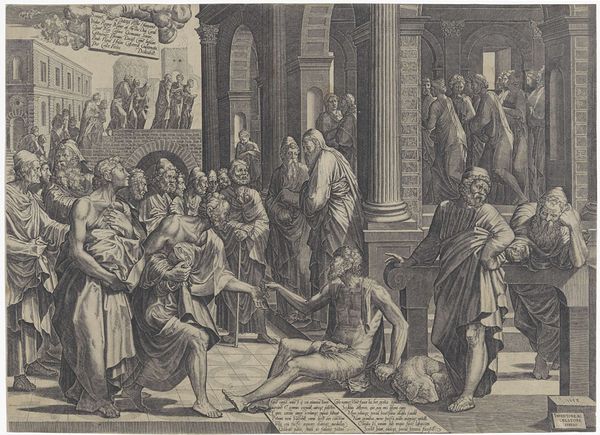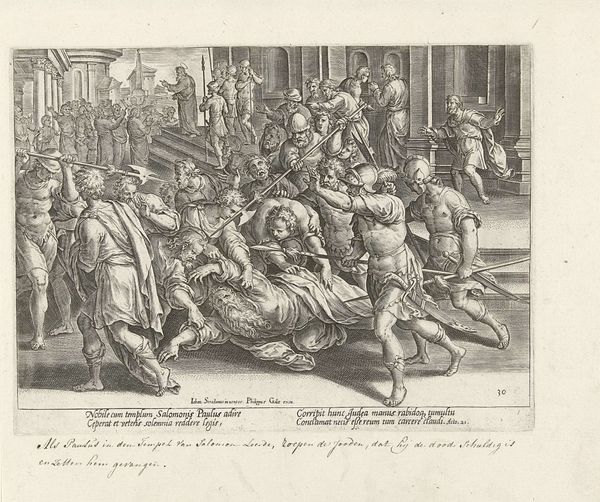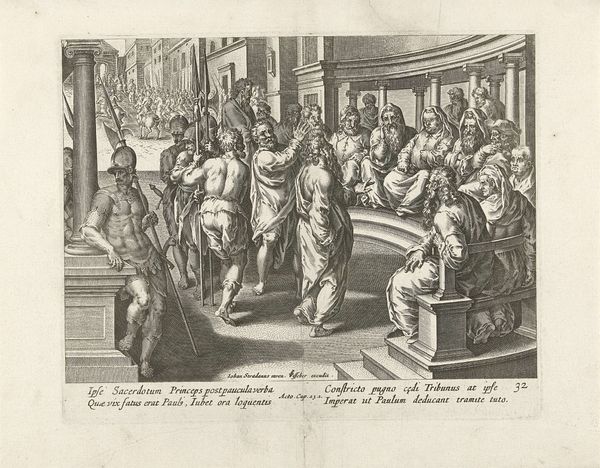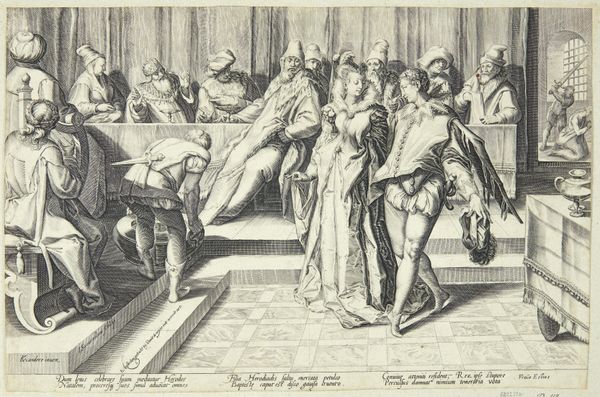
print, intaglio, engraving
#
narrative-art
#
baroque
# print
#
intaglio
#
old engraving style
#
history-painting
#
engraving
Dimensions: height 409 mm, width 517 mm
Copyright: Rijks Museum: Open Domain
Curator: Oh, this engraving! The weight of the moment hangs heavy. What do you make of it at first glance? Editor: This image, "Doornenkroning," or "The Crowning with Thorns," likely dating somewhere between 1630 and 1702, is striking. The anonymous artist renders a powerful scene in intaglio, and as an engraving, it multiplies the capacity for dissemination. I'm immediately struck by the drama, almost theatrical. The light and shadow—or lack thereof due to the medium—create an intense atmosphere, and yet, something feels staged, doesn't it? Curator: Exactly! The theatricality is key. It's as if we're peering into a deeply personal, painful moment, but it’s constructed, carefully posed almost. Notice the lines, so precise, each etched with deliberate intention. The suffering of Christ becomes a public spectacle here. Is it devotional, or is it a commentary? Editor: It’s Baroque! And these biblical scenes were designed to be read within specific political and theological frameworks. I can't help but think of how this imagery served as both a tool for religious instruction, yes, but also for reinforcing power structures. The Roman soldiers, the act of humiliation... it all speaks to themes of authority, resistance, and the body as a site of political contestation. Consider what would a viewer in the 17th century make of the dog at the bottom corner. Does its calm appearance make it indifferent, perhaps apathetic? Curator: A dog! Such a great point to bring in because this piece to me is also about a deep well of sadness and vulnerability in the face of it all. It reminds me, weirdly, of Caravaggio. The almost aggressive close-up, the starkness...there is that hint of the real, even through all that calculated posing, all the stagecraft and Baroque drama you pointed out. The dog adds a subtle bit of "real" in the mix. What would be its intended function within the artist’s world view? I am truly captured by the textures and details that intaglio has granted this anonymous author. Editor: It does render vulnerability. We can consider the engraving as a form, which is key here. The image, multiplied and distributed, reinforces not just a religious narrative, but also, perhaps, societal norms around punishment, justice, and obedience. To reflect for a moment, it really has helped to revisit how an engraving like this could embody both a sacred event and a social document of power. Curator: A potent mix, indeed, inviting us to contemplate not just faith, but the very fabric of society and how we visually create the stories we live by.
Comments
No comments
Be the first to comment and join the conversation on the ultimate creative platform.
